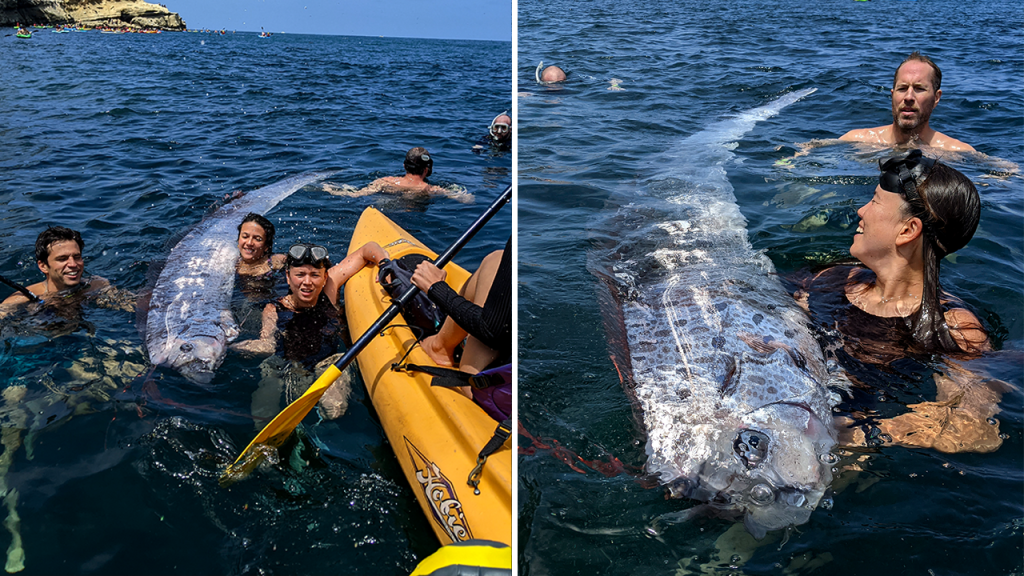A group of kayakers and snorkelers in La Jolla, California, came across a rare deep-sea fish known as an oarfish, also called a “doomsday fish” due to its long, slender body that can reach lengths of up to 36 feet. The fish they found measured 12 feet in length, and oarfish sightings in California have been extremely rare, with only 20 reported since 1901, according to the Scripps Institution of Oceanography, UC San Diego. While some believe that the appearance of oarfish may foreshadow natural disasters like earthquakes or tsunamis, scientists have not yet established a clear link between oarfish sightings and such events.
Two days after the group discovered the oarfish, Los Angeles was hit by a 4.6-magnitude earthquake, adding to the speculation surrounding the connection between oarfish sightings and seismic activity. Oarfish are known to feed on plankton, crustaceans, and squid by straining them from the water column using specialized gill rakes in their mouths. The group was able to coordinate with lifeguards to transport the fish to a NOAA facility where scientists from NOAA Southwest Fisheries Science Center and Scripps Oceanography would perform a necropsy to determine the cause of death. After the necropsy, the fish would be moved to the Scripps Marine Vertebrate Collection at the University of California San Diego, which houses over two million alcohol-preserved specimens representing more than 5,600 species of fish.
Despite the folklore surrounding oarfish sightings and their supposed connection to natural disasters, scientists maintain that a definitive link has not been established. The oarfish’s presence near Japan during major earthquakes has led to speculation about its prophetic abilities, but scientific evidence has yet to confirm these claims. The rare and mysterious nature of the oarfish has made them a subject of interest for researchers looking to uncover more about these elusive deep-sea creatures. The discovery of the oarfish in California provided a unique opportunity for experts to study the fish and gather valuable information about its biology and behavior.
The oarfish sighting in California sparked interest among the public and provided an opportunity for researchers to learn more about this elusive species. The necropsy performed on the oarfish would help scientists determine the cause of death and potentially shed light on the fish’s health and well-being. The relocation of the fish to the Scripps Marine Vertebrate Collection would allow for further study and analysis, contributing to our understanding of deep-sea ecosystems and the unique creatures that inhabit them. The discovery of the oarfish served as a reminder of the deep-sea wonders that lie beneath the surface of the ocean, captivating both scientists and the general public alike with its mysterious and otherworldly appearance.
As the oarfish remains a rare and enigmatic creature, its discovery in California provided a rare glimpse into the world of deep-sea life. The folklore surrounding the oarfish, along with its infrequent sightings and unique biological features, have made it a subject of curiosity and speculation among researchers and the public. The ongoing research and study of oarfish will continue to expand our knowledge of deep-sea ecosystems and the diverse array of species that inhabit them. The discovery of the oarfish in La Jolla served as a reminder of the mysteries that lie beneath the waves, sparking interest and fascination among those who encountered this rare and extraordinary deep-sea fish in its natural habitat.


